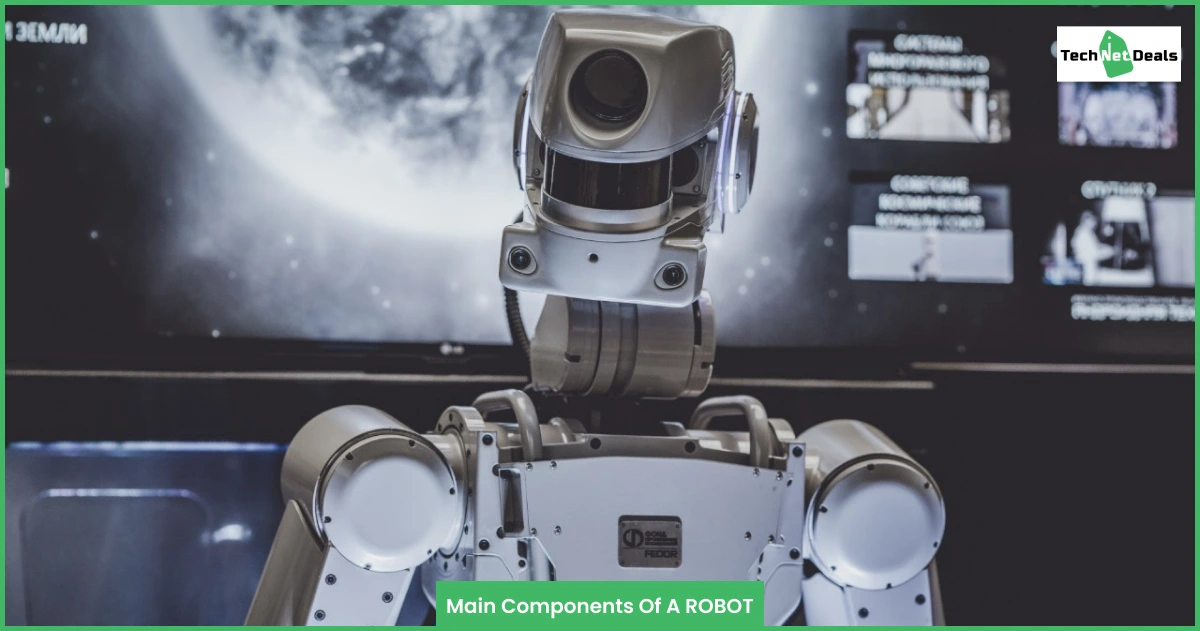
Robots and automation are becoming significant parts of our daily lives. Now not only the robots are just using it to make an impression. You will find them everywhere, but how are they functioning? First, you have to know what are the components of a robot. Then you will understand how they are working like humans.
What you are thinking, you are surrounded by them, but how? Yes, from your favorite home cleaning Roomba robots to plant robotic handles working on the packaging lines. Everything is part of robotics and runs based on programming.
Let’s see first what is the actual answer for ‘what is Robots.’
What Is A Robot?

Robots are automatically operated machines, which can be fully automatic or semi-automatic. The goal of inventing robots is pretty simple. Wherever you want to replace human efforts, you have to use robots. These robots function like humans, but these are the combinations of engineering declines.
You can complete human-like works; therefore, Robots do not have the mind and do not understand human feelings. As a result, the components of robots are very similar to any machine and computer. And the CPU is the central part of all the components.
Now let’s move on to the next part and see ‘what are the main components of a robot’.
What Are The Major Components Of A Robot?

Every robot’s functions and objectives are different. Based on these objectives, the robots are designed in different ways. But the five components are always the same.
What are the 5 main components of a robot, “Control system Sensors Actuators Power Supply End Effectors”?
Yes, these five components are always the same and compulsory parts of the robots. But apart from these five, the programming parts also make the robots unique. So, you have to add this component to the list.
George C. Devol was the first creator of Robotics. He was an inventor from Louisville, Kentucky. He gave his innovation the name of a programmable manipulator – Unimate. From that day to today, the 5 main components of ROBOTs are the same.
1. CPU

CPUs are the central components of a robot and in any smart computer technology. This is the brain of the robot. The CPU is the part that keeps everything in the right place and provides the proper feedback.
The functions and the programs are stored here. First, robots are taking environmental data by using sensors. Then, through the programming, it does the appropriate actions.
CPUs function like the human brain. Data is coming through the sensors, and information is already stored in the memory. CPU interprets the signals, and robots are involved in the acts accordingly.
2. Sensors

Sensors are another essential part of the components of a robot. These sensors are the powerhouse of Robots. They are working as the human eyes and ears. However, these sensors work very differently.
Depending on the goals of the Robots, the designers have to install the sensors. These sensors take the information from the surroundings. And supply this information to the CPU. CPU, based on these instructions, does the actions.
Here are the names of a few sensors:
- Light and sound sensors.
- Temperature and Colour sensors.
- Contact sensors.
- Distance and gap sensors.
- Pressure parameter sensors.
- Positioning understanding sensors.
Each of these sensors works differently. Through the positioning of GPS sensors and magnetic compasses, the robots will understand the actual distances and the approximate location of the robots. In industrial use, the Pressure parameter sensors are more prominent.
You may like to read: What Are Autonomous Robots? A Research-Based Study
3. Actuators

Actuators are the components of a robot. If the sensors of the eyes and ears are not functioning like muscles. Then actuators are more working as a small motor. These small motors are directly attached to the robotic structures. And it facilitates the required movement.
Electric actuators are more like research-associated works. Still, multiple projects are in the pipeline. But these types of functions are improving control and reducing environmental hazards.
Here are three types of Robot Actuators:
- Hydraulic Actuators: They require oil to streamline the required movement.
- Electric Actuators: Uses electric power for magnifying and facilitating movement.
- Pneumatic Actuators: Uses air to stimulate movement.
Among these three types of actuators, the hydraulic ones are exclusively compatible with industrial use and requirements. Pneumatic Actuators are used as cost-effective solutions for robot manufacturing. The Electric Actuators are the smartest ones and perfect for complex programming works.
4. End-Effectors

The end effectors are a very crucial part of the components of a robot. These functions determine how the robots communicate with the environment. For example, factory robots are programmed to do welding torches, rivet guns, and paint sprays. These all actions go through the quality checking of end effectors.
For example, usually, mobile robots are programmed to lift objects. From simple to complex, every work has to end effectors. Even the latest technology is inventing a robotic hand with cameras. At the end of every robotic hand, the designers add a camera to monitor the whole process.
All of these new designs are keeping the system intact and improving the accuracy level. For the safety and security issues, all of these factors are outstanding.
5. Power Supply

Food is giving power to every human being. We all consume foods to improve our stability and keep our bodies in functioning mode. And Robots are not exceptional ones. The components of a robot become functional when the power supply is enough.
Some robots are receiving electrical power from the power supply. Some are working with battery powers. But without suitable sources of energy, Robots cannot perform and do the task.
Many Robots are also available in the market, which has power-saving features.
Bright designs minimize mechanical motions. Others are using green energy sources.
Read more: What Are Teleoperated Robots? A Research-based Study
6. Programming

Programming is not part of the physical and hardware components of a robot. But it is an integral part of the robot’s functions. Therefore, scientists conduct programming on robots to dictate their functions.
The programs are designed with logic and functions. Robots contain a bulk of programs and designs. All of these programs are stored inside the robots. These tasks analyze environment data, which are used in these functions.
Programmers create these programs. And every program is running based on a different logic. So, even some robots find it convenient to find another way to complete the process.
Frequently Asked Questions About Robots:
1. What Are The Primary Mechanical Components Of A Robot?
The primary mechanical components of robots are:
- Locomotion System.
- Arms and metal body.
- Controller and power supply unit.
- Actuator system.
- The auto sensor system.
- End effector.
2. What Is The Full Form Of Robot?
The robot is the short form of the IEEE International Conference on Robotics and Automation.
3. What Are The 8 Components Of Robots?
The 8 main Components of Robots are:
- Actuation.
- DC Motor.
- Stepper Engine.
- Piezo Motors.
- Air Muscles.
- Electroactive high magnetic polymers.
- Carbon Elastic nanotubes with better elasticity.
- Manipulation.
Wrapping Up
The components of a robot all work in different ways. But these six are the main components of any robot. Maybe the programming parts do not belong in the hardware component category. But all of these components are pretty essential.
What is your idea about robotics and designs? Let us know through the comment sections. Also, if you have any innovative robotics design ideas, share your ideas in the comment sections.
Read Also:






